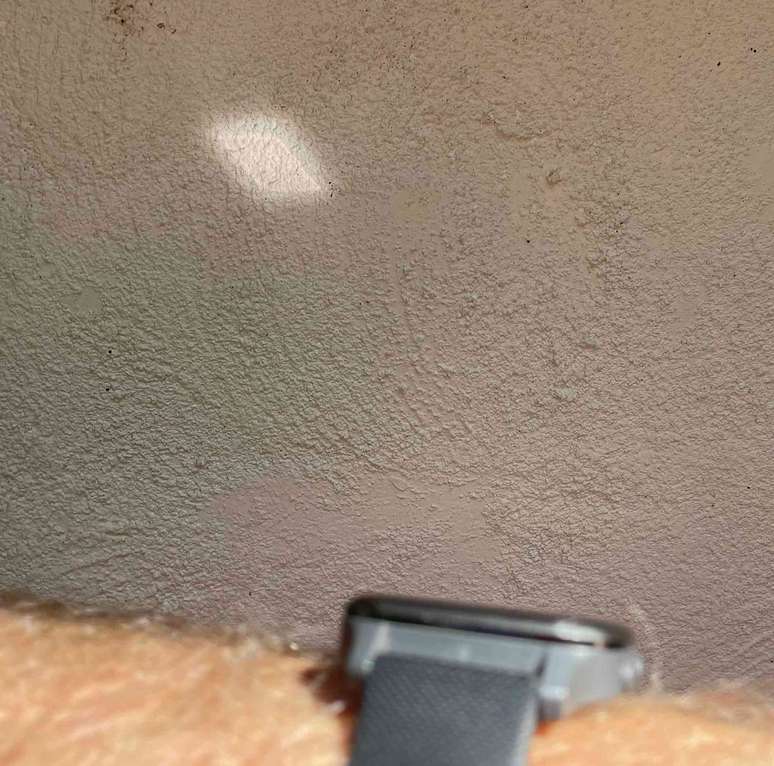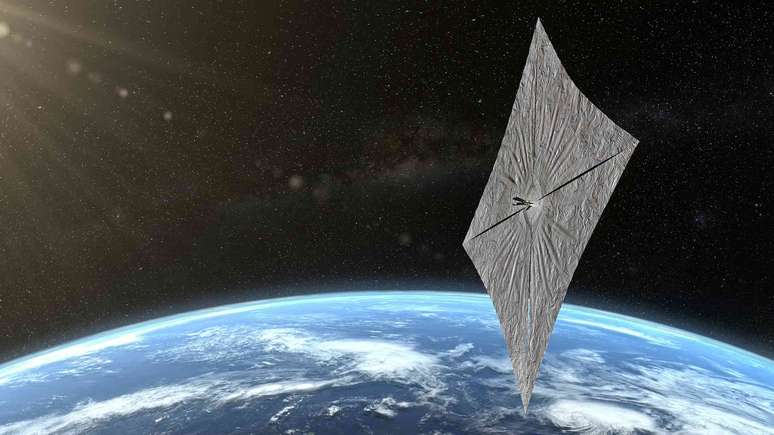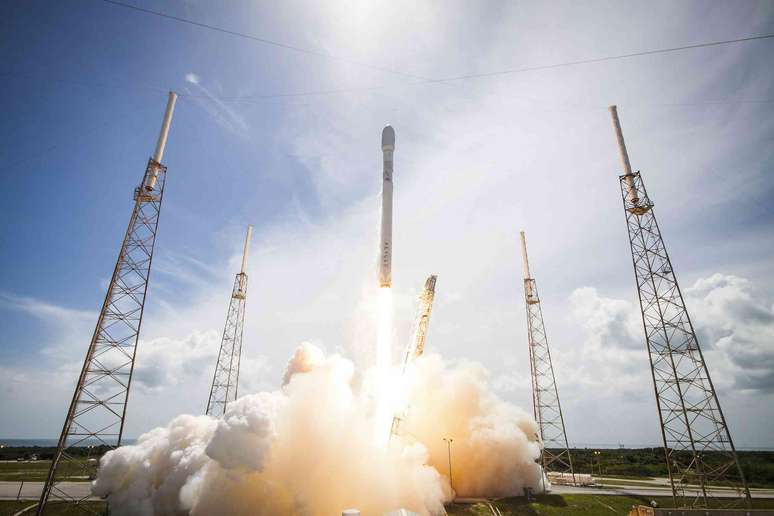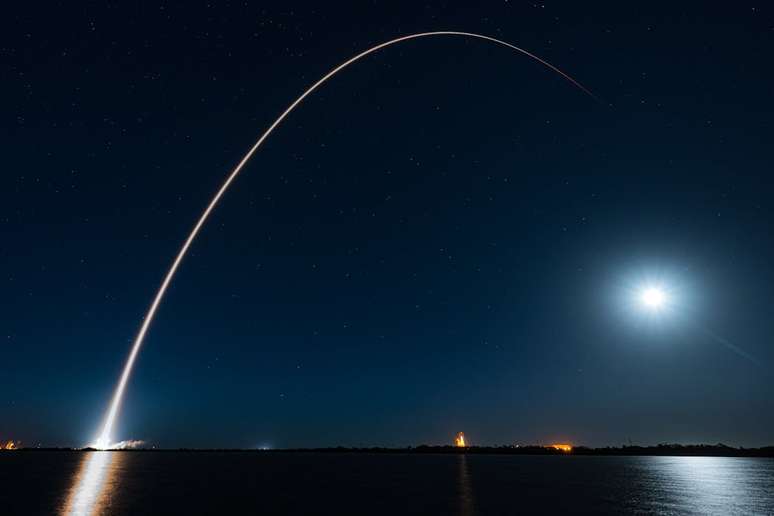Satellites reflecting sunlight back to Earth seem like the stuff of science fiction, but they are a real concern for astronomers.
A proposal for a new constellation of satellites in Earth orbit has astronomers very worried. Unlike common satellites that reflect sunlight and have light pollution as an unwanted byproduct, the satellites of the American startup Reflect Orbital would produce light pollution on purpose.
The company promises to provide “sunlight on demand” with mirrors that reflect sunlight back to Earth, allowing solar power plants to operate after dark.
It plans to start with an 18-meter test satellite called Earendil-1, which the company has requested to launch in 2026. According to the latest reports, around 4,000 satellites would eventually follow in orbit by 2030.
But how serious would this light pollution be? And perhaps even more, can Reflect Orbital’s satellites actually work as advertised?
Reflecting sunlight

Sunlight can be reflected by a wristwatch to produce a luminous spot.
M. Brown
In the same way that sunlight can be reflected off a watch face to produce a bright spot, Reflect Orbital’s satellites would use mirrors to project light onto an area of the Earth.
But the scale involved is very different. Reflect Orbital’s satellites would orbit about 625 km above the ground and have mirrors 54 meters in diameter.
When you reflect sunlight from the clock onto a nearby wall, the light spot can be very bright. But if you reflect it on a distant wall, the dot becomes larger and fainter.
This is because the Sun is not a bright point, but covers half a degree of angle in the sky. This means that over large distances the ray of sunlight reflected by a flat mirror extends at an angle of half a degree.
What does this mean in practice? Let’s consider a satellite that reflects sunlight at a distance of about 800 km, because a satellite at 625 km high will not always be directly overhead, but will reflect sunlight at an angle. The illuminated area of land would have a diameter of at least 7 km.
Even a curved mirror or lens cannot concentrate sunlight into a narrower point due to the distance from the Sun and the half-degree angle in the sky.
Would this reflected sunlight be bright or dim? Well, for a single 54-meter satellite, it would be 15,000 times dimmer than the midday Sun, but still much brighter than the full Moon.

Mylar reflectors can be deployed in orbit.
Josh Spradling/The Planetary Society, CC BY
The balloon test
Last year, Reflect Orbital founder Ben Nowack posted a short video summarizing a proof of “the last thing to build before moving into space.” It was a spotlight carried by a hot air balloon.
In the test, a flat, square mirror about 2.5 meters in diameter directs a beam of light at solar panels and sensors. In one case, the team measured 516 watts of light per square meter while the balloon was 242 meters away.
For comparison, the midday sun produces about 1,000 watts per square meter. So 516 watts per square meter is about half that, enough to be useful.
But let’s extend the balloon test into space. As we noted earlier, if the satellites were 800 km from the area of interest, the reflector would need to be 6.5 km by 6.5 km – 42 square kilometers. It’s not practical to build such a giant reflector, so the balloon test has some limitations.
What does Reflect Orbital plan to do?
Reflect Orbital’s plan calls for “individual satellites in the right constellation to light up existing solar farms.” And your goal is just 200 watts per square meter, or 20% of midday sunlight.
Can smaller satellites achieve this goal? If a single 54-meter satellite were 15,000 times dimmer than the midday Sun, it would take 3,000 of them to reach 20% of the intensity of the midday Sun. That’s a huge amount of satellites to illuminate a region.
Another question: satellites at an altitude of 625 km move at 7.5 km per second. Therefore, a satellite will be within 1,000 km of a given location for no more than 3.5 minutes.
This means that 3,000 satellites would provide a few minutes of illumination. Providing even one hour would require thousands more.
But Reflect Orbital doesn’t lack ambition. In an interview, Nowack suggested 250,000 satellites in orbits 600 km high. This is more than all currently cataloged satellites and known large space debris in orbit combined.
This vast constellation, however, would only provide 20% of midday sunlight to no more than 80 locations at once, based on our calculations above. In practice, due to the cloudy weather, even fewer places would be illuminated.
Furthermore, given their altitude, the satellites could provide illumination to most places only around dusk and dawn, when mirrors in low Earth orbit would be bathed in sunlight. Recognizing this, Reflect Orbital envisions its constellation circling the Earth above the day-night line in sun-synchronous orbits to keep it continuously in sunlight.

Cheaper rockets have enabled the launch of satellite constellations.
SpaceX/Flickr, CC BY-NC
Bright lights
So are mirror satellites a practical means of producing affordable solar power at night? Probably not. But could they produce devastating light pollution? For sure.
In the early evening hours, it doesn’t take long before you can spot satellites and space junk, and they are not deliberately designed to be bright. With Reflect Orbital’s plan, even if only the test satellite works as expected, it will at times appear much brighter than the full Moon.
Such a constellation of mirrors would be devastating for astronomy and dangerous for astronomers. For someone looking through a telescope, the surface of each mirror could be almost as bright as the surface of the Sun, risking permanent eye damage.
Light pollution will also damage anyone’s ability to see the Universe, and light pollution is known to affect the daily rhythms of animals.
While Reflect Orbital aims to illuminate specific locations, the satellites’ beams also scan the Earth as they move from one location to another. The night sky may be illuminated by flashes of light brighter than the Moon.
The company did not respond to the request The conversation on these concerns by the deadline for publication of this text. However, he told the Bloomberg news agency this week that he plans to redirect sunlight in “short, predictable and targeted” ways, avoiding observatories and sharing satellite locations so scientists can plan their work.
The consequences would be disastrous
It is not yet known whether the Reflect Orbital project will go ahead. The company may launch a test satellite, but it still has a long way to go before it can reach 250,000 huge mirrors constantly orbiting the Earth to keep some solar plants running for a few more hours a day.
However, it remains a project to follow. The consequences of a success for astronomers – and anyone else who loves the dark night sky – would be disastrous.
The number of satellites visible at night has skyrocketed.

Michael JI Brown receives research funding from the Australian Research Council.
Matthew Kenworthy receives research funding from the Dutch Research Council (NWO).
Source: Terra
Rose James is a Gossipify movie and series reviewer known for her in-depth analysis and unique perspective on the latest releases. With a background in film studies, she provides engaging and informative reviews, and keeps readers up to date with industry trends and emerging talents.







